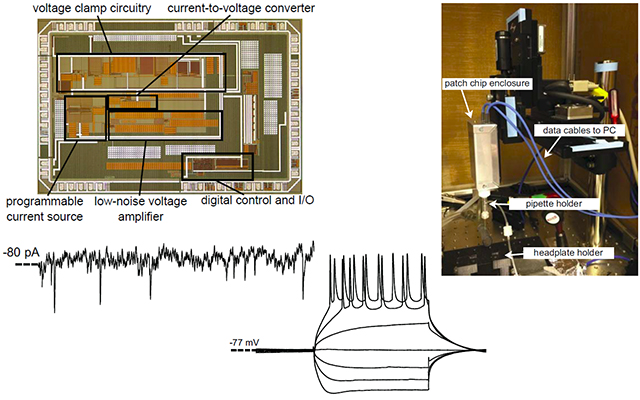
Patch-clamping is a gold-standard electrophysiology technique that has the temporal resolution and signal to noise ratio capable of reporting single ion channel currents, as well as electrical activity of excitable single cells. Despite its usefulness and decades of development, the amplifiers required for patch-clamping are expensive and bulky. This has limited the scalability and throughput of patch-clamping for single ion channel and single- cell analyses. In this work, we have developed a custom patch-clamp amplifier microchip that can be fabricated using standard commercial silicon processes capable of performing both voltage and current clamp measurements. A key innovation is the use of nonlinear feedback elements in the voltage clamp amplifier circuit to convert measured currents into logarithmically encoded voltages thereby eliminating the need for large high-valued resistors – a factor that has limited previous attempts at integration. Benchtop characterization of the chip shows low levels of current noise (1.1 pA rms over 5 kHz) during voltage-clamp measurements and low levels of voltage noise (8.2 μV rms over 10 kHz) during current-clamp measurements. We demonstrate the ability of the chip to perform both current and voltage clamp measurement in vitro in HEK293FT cells and cultured neurons. We also demonstrate its ability to perform in vivo recordings as part of a robotic patch-clamping system. The performance of the patch-clamp amplifier microchip compares favorably with much larger commercial instrumentation, enabling bench-top commoditization, miniaturization and scalable patch-clamp instrumentation.
